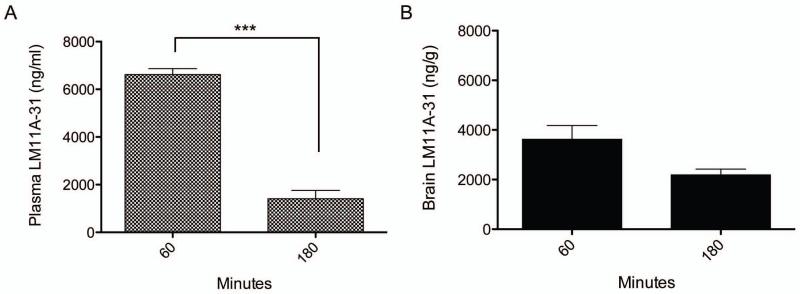Fig 2. LM11A-31 concentrations peak early in Plasma (A) and Cortex (B) of rats undergoing status epilepticus and are maintained for at least 3 h.
LM11A-31 concentrations were measured 1 h and 3 h after SE onset. LM11A-31 levels were lower in both plasma (1 h, n=3; 3 h, n=3; p<0.001) and cortex (1 h, n=3; 3 h, n=3) 3 hours after SE when compared to levels 1 h after SE. Statistically significant differences (p<0.05) were determined using a Student’s t-test. Error bars, mean ± S.E.M. Cortex and plasma was harvested from animals receiving 200 mg/kg of LM11A-31 with pilocarpine administration and a second 200 mg/kg LM11A-31 at onset of SE. Rats were sacrificed 1 h and 3 h after SE onset (i.e., 1 h and 3 h after second LM11A-31 dose) and results demonstrate blood-brain permeability, and brain and plasma concentrations that have been previously demonstrated as therapeutic in both in vitro and in vivo models of neurodegenerative diseases (Knowles et al., 2013). Error bars, mean ± SEM.

